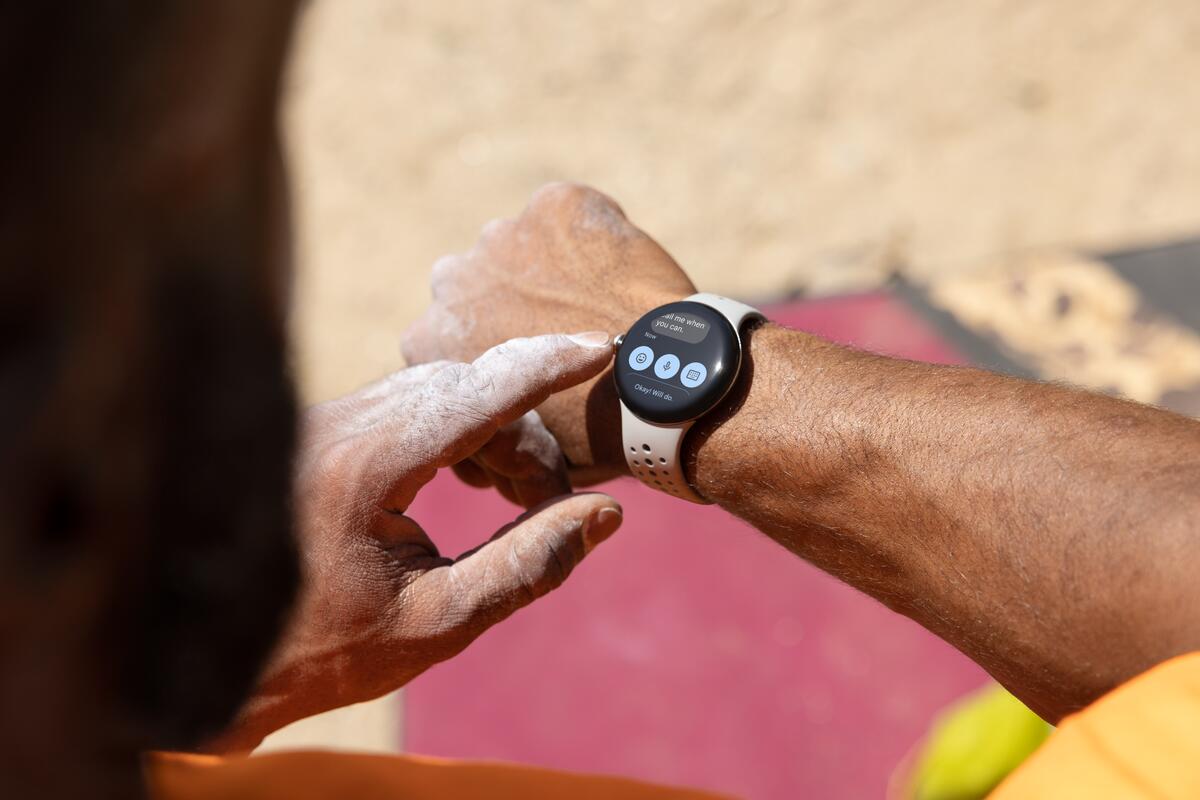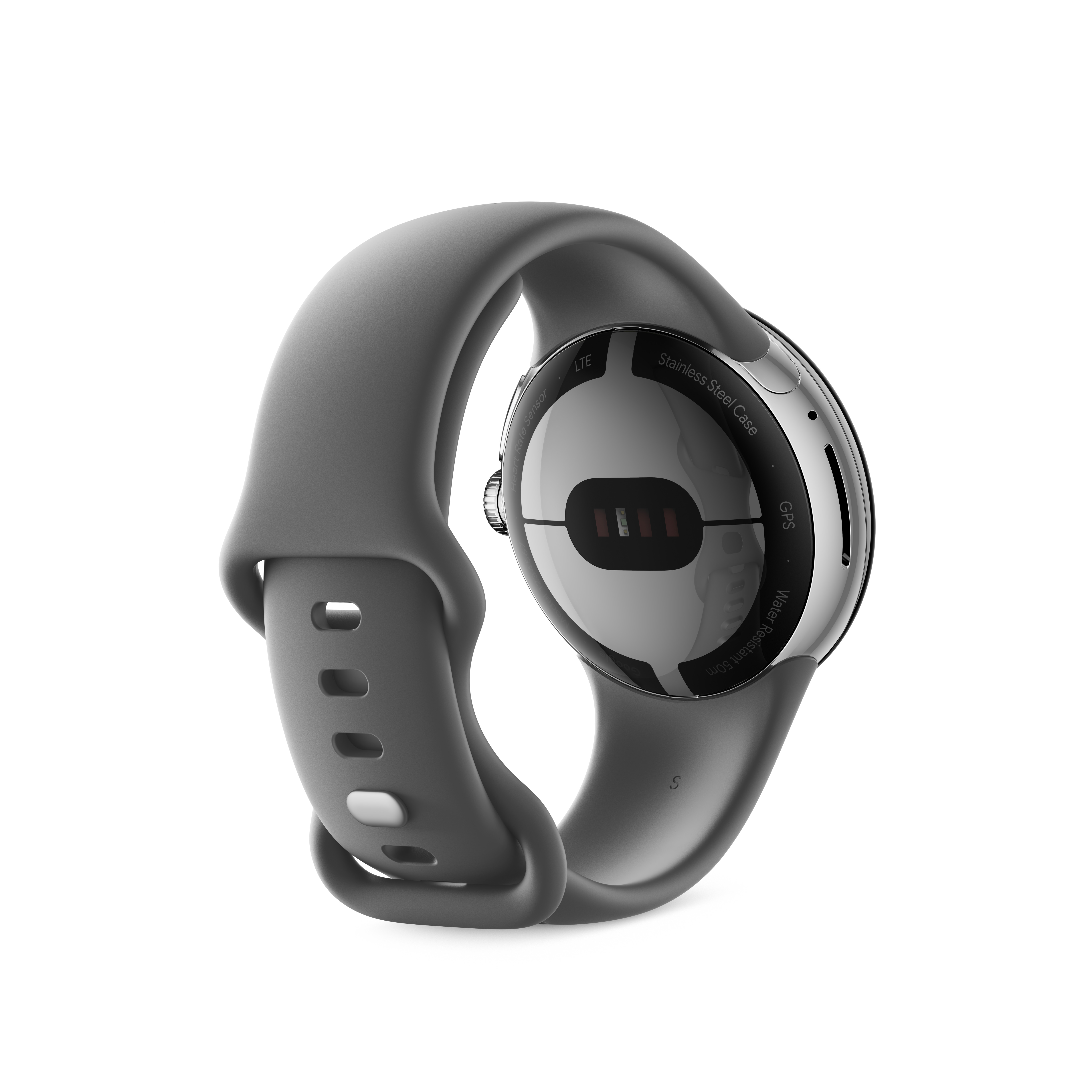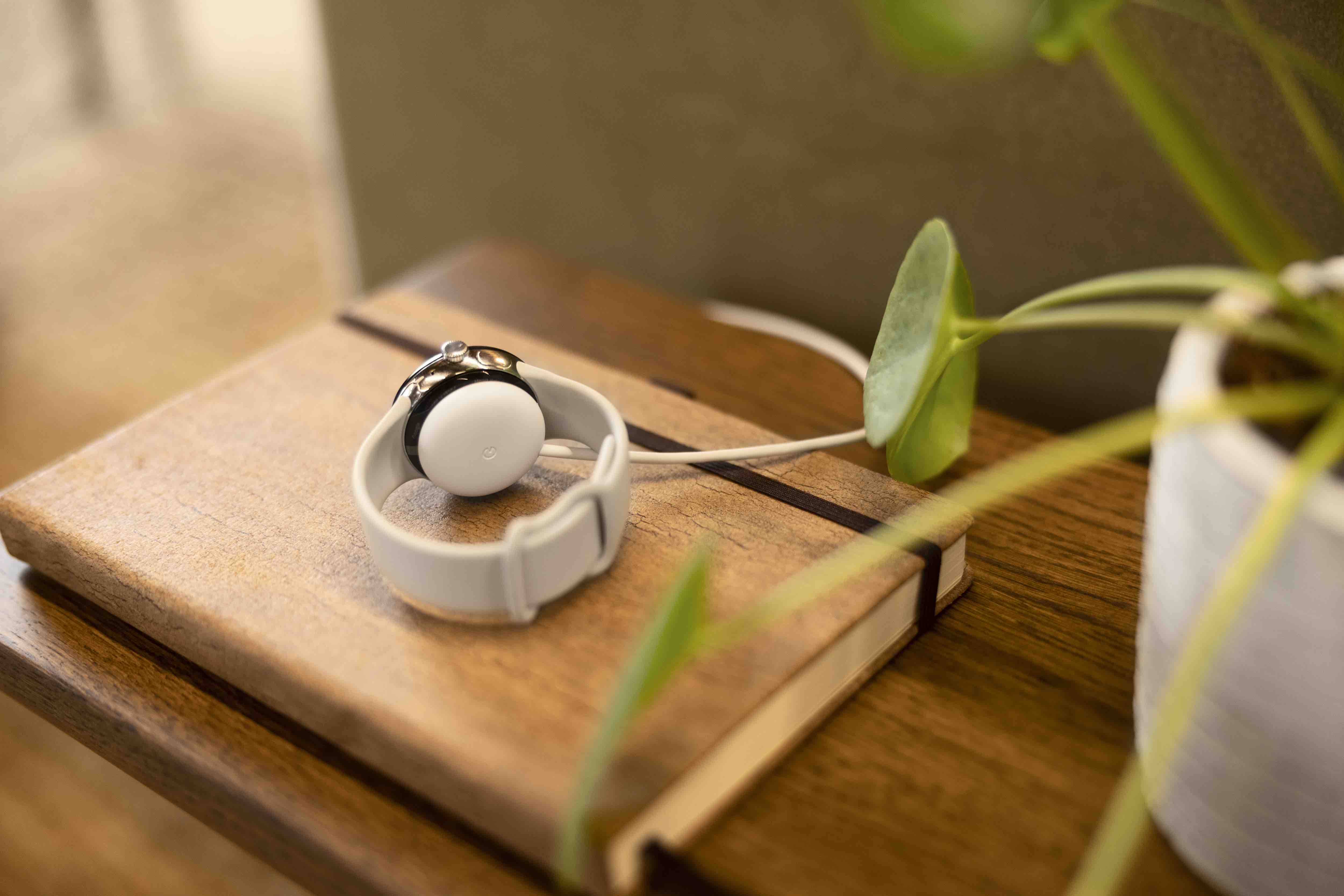There are a couple of parallels to be drawn between the Pixel 8 and Pixel Watch 2. One is obvious, the other a bit more subtle. The first is the addition of temperature sensors — though I would argue that the addition makes a lot more sense on a wearable than a handset. The second is the reminder that in mass-produced consumer hardware land, updates are — more often than not — evolutionary.
The past two Pixel handsets were a reminder of the latter. Google swung for the fences with the Pixel 6 and the subsequent two devices have been largely iterative — refinements, if you will. The first Pixel Watch, meanwhile, was the summation of a lot of time and a whole lot of money. Lest we forget, Google spent $2.1 billion on Fitbit and $40 million on Fossil IP (not to mention the various companies acquired by the companies it acquired, including Pebble and Misfit).
Years of relying on third parties to produce Wear OS hardware didn’t make a dent in market share, so Google made two key moves. The first was convincing Samsung to make the jump from the Tizen operating system on its watches, and the second was building its own. Much like the Pixel phone line before it, Google would take matters into its own hands.
Given the amount of effort that culminated in the creation of last year’s Pixel Watch 1, it comes as little surprise that the sequel doesn’t offer any leaps and/or bounds over its predecessor. I suspect the company anticipated that glancingly Pixel Watch owners would opt to upgrade, and frankly, the Pixel Watch 2 doesn’t offer much in the way of compelling reasons.

There’s the aforementioned new sensor and a (very smart) jump from an Exynos processor to Qualcomm’s latest, but the real story of the Watch 2 is an even deeper integration with the Fitbit platform. From day one, Google recognized that health monitoring is by far the biggest driver of wearable options. Instead of starting from scratch, it went ahead and bought one of the biggest names in the biz (must be nice). I do appreciate that Fitbit co-founder James Park got some good stage time at last week’s event.
It would seem that the Fossil IP acquisition was the primary driver in the original watch’s design. Honestly, it was one of the original’s greatest assets. It’s a good-looking piece of hardware. It’s all curves and glass and metal, a minimalist approach that makes the product adaptable to a variety of different styles. No surprise then that the product is virtually identical to the original.
When the first Watch launched, I praised Google for the smaller design. Fitbit has a massive female user base. That’s a huge blind spot for many wearable makers who love nothing more than designing giant watches. Of course, now I have the opposite complaint (I’m a hardware reviewer, being hard to please is kind of my thing). Like its predecessor, the Watch 2 only comes in a single size.
The human body is such a broad spectrum of shapes and sizes, so when it comes to making wearables, more choice is nearly always a good thing. I’m 5’11”, which puts me a hair over the average for American men. The Watch 2 looks small on my wrist, so I suspect that will also be the case for a lot of folks. The biggest downside of a small device is — naturally — the small screen. This is a game where fractions of an inch truly make a difference. The Watch 2’s screen measures at 1.2 inches — versus 1.69 inches on the smaller Apple Watch model.

Once again, it takes a minute to learn how to get the band on and on off. In fact, the Watch app includes instructions up front — Google no doubt got a lot of feedback. What the design does afford, however, is an extremely secure connection between watch and band. The charging puck also keeps the watch more secure than before, owing to a quartet of pins on the back. The new connectors also afford the device a big upgrade on charging times. The one downside, really, is that the Watch isn’t compatible with last year’s charger — though, again, this won’t be an issue for the vast majority of folks.
The battery itself has been upgraded a smidge, as well, from 295mAh to 306mAh. That’s very clearly not a big jump. The truth is that the chipset also plays an important role here. You’ll be able to make it through a 24-hour period without fuss. That means not having to choose between fitness and sleep tracking — certainly not something every single smartwatch maker can say at this point.
The arrival of skin temperature and stress sensors open the device to do more of what Fitbit was already doing. Either Google didn’t quite crack the code on including the sensors last time around or it made a very intentional decision to save some new stuff for gen 2. Either way, the original Pixel Watch had to do some catching up with Fitbit, a wholly owned subsidiary of Google.
Health tracking and software were what Google wanted when it bought Fitbit, and the Pixel Watch 2 continues to deliver on those promises. Fitbit was, after all, at the vanguard of wearable health tracking. There’s been some debate over what the brand’s ultimate fate will be under its new parent, though it’s clear that much of the company’s work will continue to live on as the Fitbit app serves as the health tracking destination on Pixel Watches. It’s also worth noting that the Fitbit to Pixel Watch pipeline isn’t fully one-sided, as evidenced by the new Charge 6.

The arrival of Fitbit-first features like stress response are also an indication that these devices have room to go beyond the standard health/fitness tracking. Pairing that data with things like heart rate point toward devices that can do a better job with things like mental health tracking.
At $350, the Watch 2 starts at $50 less than the Apple Watch Series 9 and $50 more than Samsung’s Galaxy Watch 6, its top competitor in the Wear OS space. You should probably also factor in the $10 a month Fitbit Premium subscription, if you want the full effect — though companies like Oura have seemingly prepared users for that sort of secondary sticker shock.
When it arrived, the first Pixel Watch shot to the top of the list of Wear OS devices (it still has plenty of competition from Samsung). And while the Watch 2 doesn’t present a huge update, Google did a fine job fixing many of the device’s shortcomings, maintaining a position as one of the best smartwatches around.































Comment